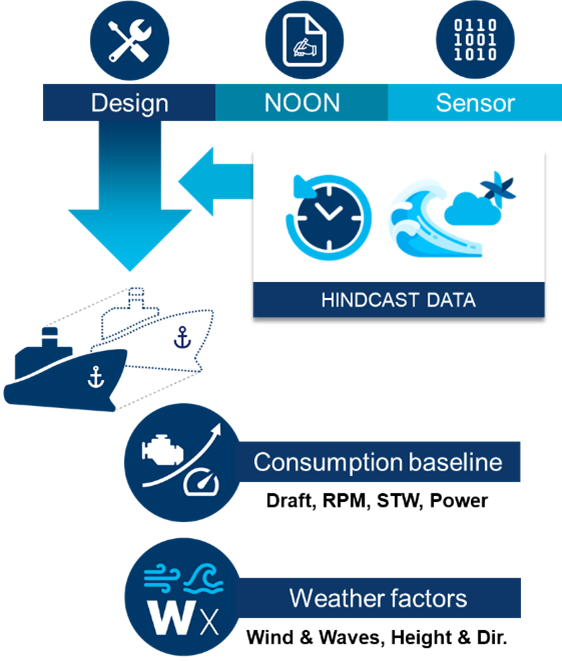
27 Mar Artificial Intelligence: The Ultimate Alternative Energy for the Maritime Industry
Artificial Intelligence in maritime energy
By Anouar Kiassi, Managing Director of Ascenz Marorka
Overwhelmed by debates on alternative energy sources to achieve the ambitious environmental goals set by international organisations, the maritime industry is searching for effective solutions to reduce energy consumption and emissions while improving competitiveness. In this context, Smart Shipping and the use of Artificial Intelligence (AI) are emerging as major drivers of transformation. By optimising operations, enhancing safety, and reducing environmental impact, these technologies are revolutionising ship management and energy efficiency.
The best energy is the one that is not consumed. Following this logic, Smart Shipping is establishing itself as a key approach to decarbonising maritime transport. It is based on the integration of advanced digital technologies that enhance operational cost efficiency and transparency, reduce emissions, and support operational excellence. AI is at the core of these revolutionary solutions. By leveraging data collected from ships, it enables more refined decision-making in routing, fuel consumption, and preventive maintenance.
But before discussing technology, what are the key challenges?
According to the International Maritime Organization (IMO), international maritime transport consumed approximately 200 million tonnes of fuel in 2020, representing a total annual cost of $100 billion globally (assuming an average price of $500/MT) and emitting around 608 million tonnes of CO2.
Regardless of the methods and tools used to save energy, the impact of these measures is significant:
|
Annual Savings (Assumptions) |
1% |
3% |
5% |
10% |
|
Induced Global Annual Savings |
$1 billion |
$3 billion |
$5 billion |
$10 billion |
|
Induced Annual Savings per Ship (based on a fleet size of 96,000 – 60,000 vessels) |
$10-17k |
$31-50k |
$52-83k |
$104-165k |
These estimates do not include the additional direct or indirect economic impact of current or future regulations (CII, FUEL EU, EU ETS, etc.).
Furthermore, most maritime transport professionals agree that savings of 5% to 10% can be achieved through simple operational measures supported by digital technology. Indeed, in an article published during the HullPic 2023 conference, page 151), Navigator Gas, one of the world’s largest liquefied gas shipowners, reported a 15% reduction in consumption and emissions thanks to Ascenz Marorka’s Smart Shipping tools.
Artificial Intelligence at the Service of Maritime Operational Excellence
Artificial intelligence techniques are diverse and continue to evolve at an impressive pace. However, for the end-user of an intelligent system, the most important aspect remains the value delivered by the tool. Thus, to describe the significance of AI in maritime applications, it is better to focus on the “what” rather than the “how.” This will be illustrated through several examples.
Data: The Essential Nutrient of Artificial Intelligence
The collection of operational data in the maritime sector has never been as abundant as it is today. A single vessel can generate and/or collect data for numerous stakeholders: shipowners, charterers, regulators, authorities, creditors, and more.
A ship’s operational data can come from three sources:
- Manual data (e.g., (e.g., noon reports) reported by the crew. These figures may come from onboard measuring devices or human observations.
- Sensor data (e.g., flow meters) providing automated and high-frequency measurements.
- Third-party sources (e.g., weather data, AIS) with a variety of communication protocols, sampling frequencies, and data formats.
Finally, data quality is essential to support informed decision-making and ensure confidence in conclusio
Digital Twins: Optimised Ship Operations
Digital twins represent a major advancement. These mathematical and physical models are virtual replicas that reproduce the behaviour of ships under real conditions, enabling optimised operations.
Digital twins range from so-called “white” models, based solely on physical laws, to “black” models, relying entirely on data-driven learning. Ascenz Marorka favours “grey” models, which combine both approaches, mitigating their respective limitations, such as overfitting (data-driven) or overgeneralisation (physical laws).
Some key use cases of a ship’s digital twin include:
- Assessing additional resistance due to hull and propeller fouling.
- Predicting fuel consumption at sea.
- Modelling LNG boil-off in a gas carrier’s tank.
Combined with a mathematical algorithm, the digital twin enables the creation of optimisation solutions that select the best prediction to maximise (or minimise) a cost function representing the optimisation objective. In some algorithms, such as weather routing, the final result is achieved after evaluating thousands, if not millions, of options. Thus, to reach conclusions in an acceptable time frame, the intelligence of the mathematical algorithm is just as crucial as the quality of the digital twin.


Evaluating LNG Sloshing in a Gas Carrier’s Tank for Predictive Maintenance
Sloshing of liquids is one of the most complex phenomena to model. Due to the extreme conditions of cryogenics and safety considerations, LNG tanks are subject to significant structural and thermodynamic constraints. In the context of predictive maintenance for an LNG carrier’s GTT tank, assessing the consequences of LNG sloshing inside the tank is more important than predicting its precise motion.

In collaboration with its parent company GTT, Ascenz Marorka has developed a unique AI-based algorithm using machine learning techniques to predict the effects of LNG sloshing. Leveraging one of the world’s largest hydrodynamic databases maintained by GTT, this tool employs artificial intelligence to provide near real-time assessments of pressure loads on tank walls, structural vibrations, and LNG boil-off rates.
The use of artificial intelligence is profoundly transforming the maritime industry. In a context where regulatory requirements are tightening and cost pressures are increasing, Smart Shipping technologies are proving to be essential levers to help maritime stakeholders intelligently exploit their data to improve profitability while directly contributing to the decarbonisation of maritime transport.
Artificial Intelligence in maritime energy


